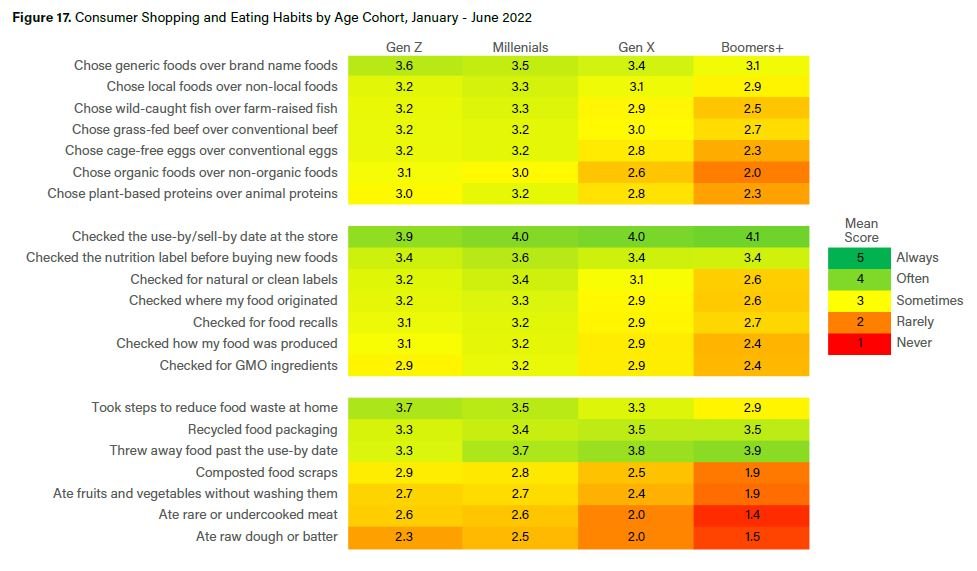The June edition of the Consumer Food Insights (CFI) survey is now out. This month’s report is chock-full of interesting data and insights.
Here are a few highlights:
The Sustainable Food Purchase Index reached it’s highest level (70 out of 100) since our tracking survey began in January 2022.
Food spending continues to climb; this month the main increase is from spending on food away from home while spending on grocery was essentially flat.
Measured rates of food insecurity remain steady but there are some signs of belt-tightening among consumers, as there is an increase in price sensitivity and choice of generics over brands as well as an increase in food spending as a share of income for the lowest income consumers.
This month, we did a deep dive into impacts of age on consumer food behaviors and attitudes. There were significant age/generation gaps in several of our measures. For example, younger generations tended to place more important on environment and social issues when buying food compared to older generations.
It is also the case that food insecurity is highest among the younger households.
A corollary is that older consumers are more happy and satisfied with their food and diets than younger consumers. There are also differences in beliefs and purchase behaviors as the figure below illustrates.
Finally, we added a number of new ad hoc questions this month related to gardening, global food supply chain disruptions, and overall satisfaction with food issues relative to other issues in daily life. Seventy percent of respondents said they were worried or very worried about the Russia-Ukraine war affecting global food supplies; a smaller share, but still a majority (58%) thought the war had directly affected their food prices or availability. The most favored policy response was to increase U.S. food production.
There is a lot more in the full report. I encourage you to check it out at our Center for Food Demand Analysis (CFDAS) website.











